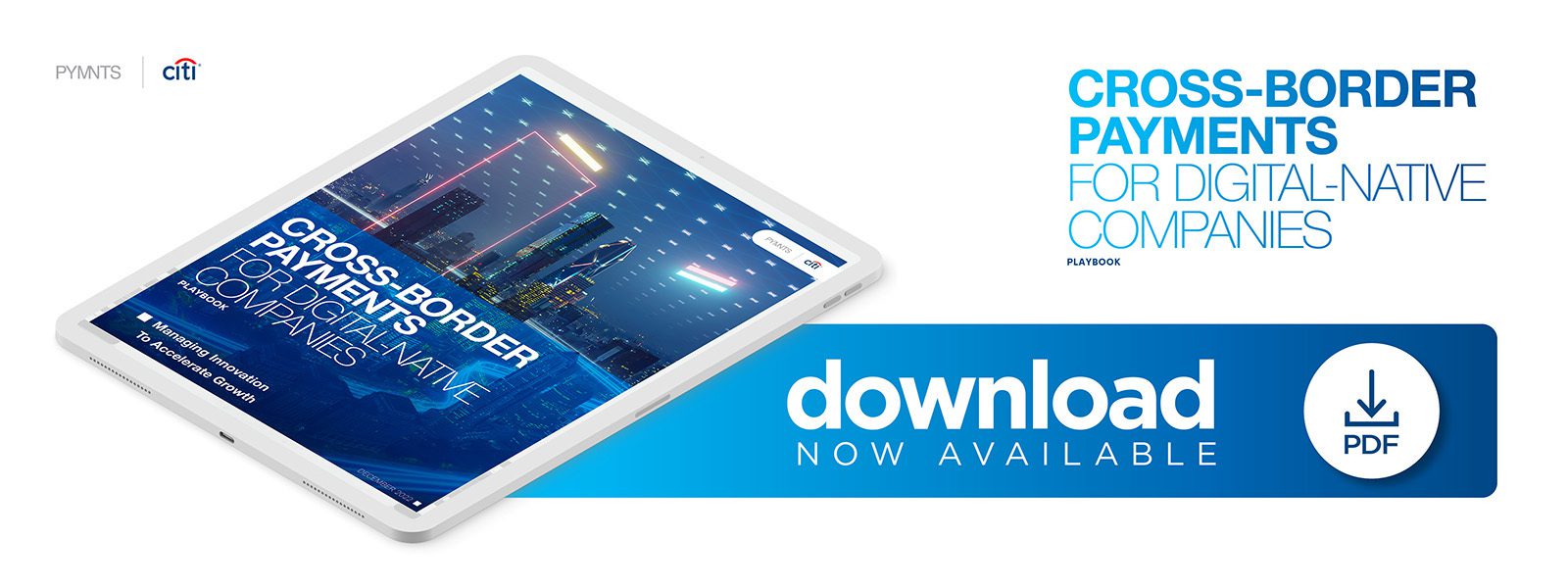Global Growth Creates Compliance Challenge for Digital Brands

The digital economy’s capacity to operate in real time across international borders can add layers of complexity to businesses’ commercial opportunities. Digital businesses can launch globally as quickly as they can locally, but they must take the challenges and complexities that come with international payments into consideration.
As payment options increase and consumers’ preferences evolve, access to the right cross-border payment solutions is critical. Still, it is not always easy for digital-native businesses to find payment providers that meet all their needs as they scale.
“Cross-Border Payments For Digital-Native Companies: Managing Innovation To Accelerate Growth,” a PYMNTS and Citi collaboration, examines the challenges digital-native companies face and outlines what they can do to achieve sustainable growth.
As businesses grow internationally, risks could diminish the fiscal benefits of expansion.
Fraud and regulatory compliance are major challenges digital businesses face, and this is complicated by slow payment processing times, foreign exchange (FX) volatility, and the lack of access to banking infrastructure to manage global transactions.  To overcome this barrier, digital businesses should seek tools that increase access to robust, global banking infrastructure, aid in transparent liquidity management, and assist with compliance and transaction monitoring.
To overcome this barrier, digital businesses should seek tools that increase access to robust, global banking infrastructure, aid in transparent liquidity management, and assist with compliance and transaction monitoring.
Innovation is one way organizations can manage the complexity of rapid international growth.
Digital-native businesses can help ensure their health with tools that support the automation of payments workflows, user-friendly features that simplify the digitization of legacy cross-border transaction processes, embedded FX monitoring and management, and features that enable multicurrency pricing for goods and services.
 Digital-native businesses must assess their technological capabilities before moving ahead with expansion plans.
Digital-native businesses must assess their technological capabilities before moving ahead with expansion plans.
Third-party solutions can streamline innovation and offer key features that strengthen user experiences, improve compliance and support risk management efforts. They also bolster payments digitization, which is crucial for keeping experiences consistent for customers.
Accepting business from customers abroad may be simple at first, but delivering goods and services internationally requires significant expertise and a mastery of cross-border payments’ complexity. For some organizations, the key to success will be adopting solutions that can connect to robust banking infrastructure and support rapid scalability.
To learn more about how digital-native businesses can seamlessly scale for international growth, download the report.
